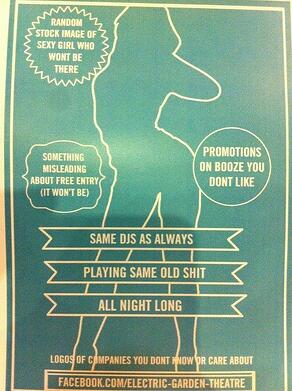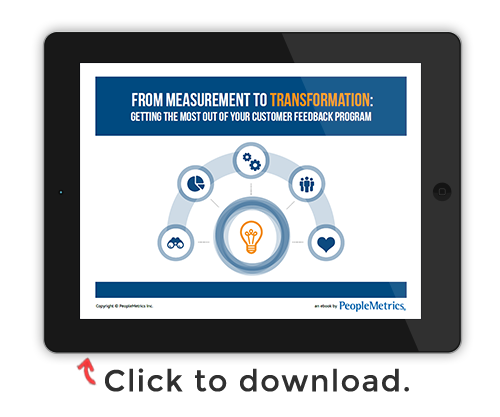
"Trust is the glue of life... it's the foundational principle that holds all relationships."
- Steven Covey
Can You Hear Me? At All?
Last week my 14-year-old son's phone stopped working. This happened two days before my son, Nat, was due to take a trip without us to Boston.
I dove right into the omni-channel AT&T customer experience. I pre-ordered a new phone online; received an email informing me the phone was ready to be collected; gathered the requisite documentation.
And then Nat and I took a stroll over to the nearest store to finish up our order.
Take One
After a 20-minute wait, we were greeted by a pleasant sales assistant who asked to see my order summary and proof of identity. I presented my driver's license with an expired date on it, alongside a temporary license valid until 2018, my social security card and a credit card in my name. She examined the documentation and slowly shook her head from side-to-side.
"We cannot accept a temporary ID. It's company policy."
- AT&T Customer Service Rep (c. 2014)
So I asked to speak to the manager.
Take Two
When the manager eventually emerged from the back room, I held my photo ID next to my cheek and explained my predicament: "Look, it's really me...and here's my social. And another piece of paper that says I'm legal to drive until 2018 with my current address on it. And yes, it matches the address you have in your files for my account. And here's the credit card I used to buy the phone that I would like to pick up this evening."
Easy button, right?
"We cannot accept a temporary ID. It's company policy. You might not be who you say you are, and then we would be liable."
- AT&T Store Manager (c. 2014)
Take Three
I knew the following day, I would board a plane to San Francisco with the very same ID. And there would be no problems with me doing so. See, you can travel within the US on an expired license for up to 12 months.
Frustrated but desparate, I proposed an alternative plan. I would send Nat back to the store, with my passport, to collect the phone that I had already paid for.
"We cannot sell to anyone under 18 years of age. Not even if you give us permission. Company policy."
- The Same AT&T Store Manager (c. 2014)
AT&T has "known" me for close to a decade of customer loyalty. Over the years I have added phones and tablets and insurance and international plans to the suite of services I receive from them. I auto-pay my larger-than-a-car-payment-bill on time every month.
They treated me like a stranger. Someone not to be trusted.
The Four Ways
As my colleague George wrote in a prior post, customer trust defines the customer experience. Indeed, in our Voice of the Customer and Voice of the Prospect work, we typically partner with companies that are working hard to earn and keep customers' trust by not making their customers work hard to earn it from them.
If this blog title caught your eye, you're probably like the majority of our clients. You trust your customers, and you're looking for ways to encourage them to reciprocate. You want to build a relationship with them. Here are 4 best practices that companies can employ to help cement solid, lasting relationships with their customers through customer-centric selling.
1. Feel their pain.
Trust begins with understanding. Imagining what it is like to be that person. If AT&T were an empathetic brand they'd consider their policies from their customers' point of view. They'd go out of their way to hire, train and empower their employees to consider the situation from the other side. They'd imagine what it might feel like to be a parent whose 9th-grade son is traveling 300 miles away from home, phone-less.
And that is just the surface stuff.
Some brands are going much deeper than policy design and employee training. According to a recent Emotivator post, in an attempt to better empathize with banking customers with mobility issues, Barclay's Bank is having its branch staff wear a specially designed suit as they enter and seek service in one of their branches. The suit is weighted, and includes goggles that dim vision and headphones that distort hearing. Indeed, it even includes sensors that create temporary joint pain.
Experiencing what it is to be a customer who is impaired in these ways creates a whole new level of insight into what that customer might need. This is leading Barclay's re-design of common bank forms, devices and physical branch structures.
2. Tell the Truth.
There is a refreshing trend toward transparency and honesty in marketing communications.
-
Tell the truth.
-
Tell it like it is.
-
Trust follows.
This flyer from the The Electric Garden Theatre nightclub in Ireland (courtesy of Andy Sernovitz) is a perfect example of how to be honest and build trust – and a loyal following – as a result.

3. Let Your Fans do the Selling.
After graduating from university in the early 1960s, my father worked in Liverpool as a journalist on the Liverpool Post and Echo. He lived in a boarding house run by a landlady who would pop out of her room every time she heard him in the hallway. In her thick scouser accent, she'd recommend some new product that he absolutely had to try. She would always end her unsolicited advice like this:
"It comes highly recommended by the man on the telly."
Dad never purchased anything Mrs. Lumsden recommended – because she wasn't that credible, and he certainly didn't trust the man on the telly!
Fast forward 50 years, and company-produced advertisements, slogans, features and benefits appear even less credible to the educated consumer. Today, the most credible and trustworthy brands are those with raving fans doing the selling for them. The challenge now is to find and fuel your brand ambassadors and encourage them to tell your story for you.
As Rohit Bharvava recently wrote: "A great message will still have limited impact if you have to be the one delivering it on behalf of your own brand." Rohit goes on to say, "Brand ambassadors are more than good customers. They are the individuals who love what you do so much that they are highly likely to volunteer to tell other people about it." Dunkin Donuts is a good example of a company with a raving fan following, and manages a program for showcasing those fans – showing appreciation and even delighting them.
4. Own Up to Mistakes.
Even the most empathetic, open and loved brands make mistakes. And this is when trust is put to the test. If you make a promise and you break it, it is hard to recover.
But not impossible.
Earlier this week Seth Godin wrote about the importance of saying to customers, "you're right, we were wrong." Seth says: "owning that and saying it outloud does two things: it respects the customer and it allows you to make more promises in the future."
–Kate Feather
Moving Forward
As you think about ways to enhance your customer and prospect experience, in 2015, what are you doing to earn their trust? What steps are you taking to understand your customers' pain, find your raving fans, be more truthful and fix your mistakes? Download our free eBook to learn how you can transform your experience and create higher levels of customer trust.





%20(1).png)